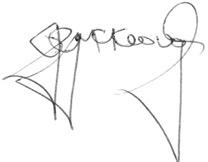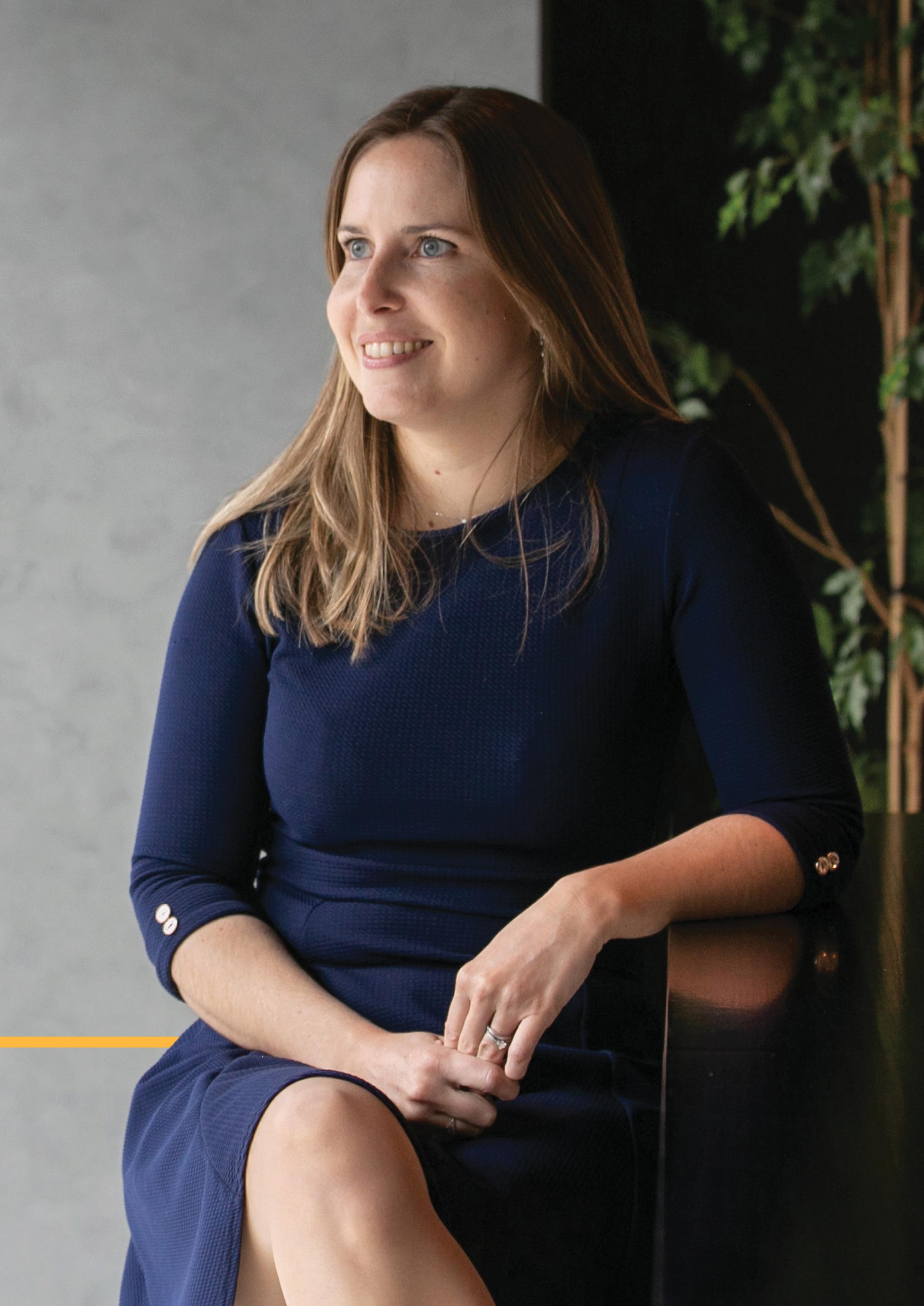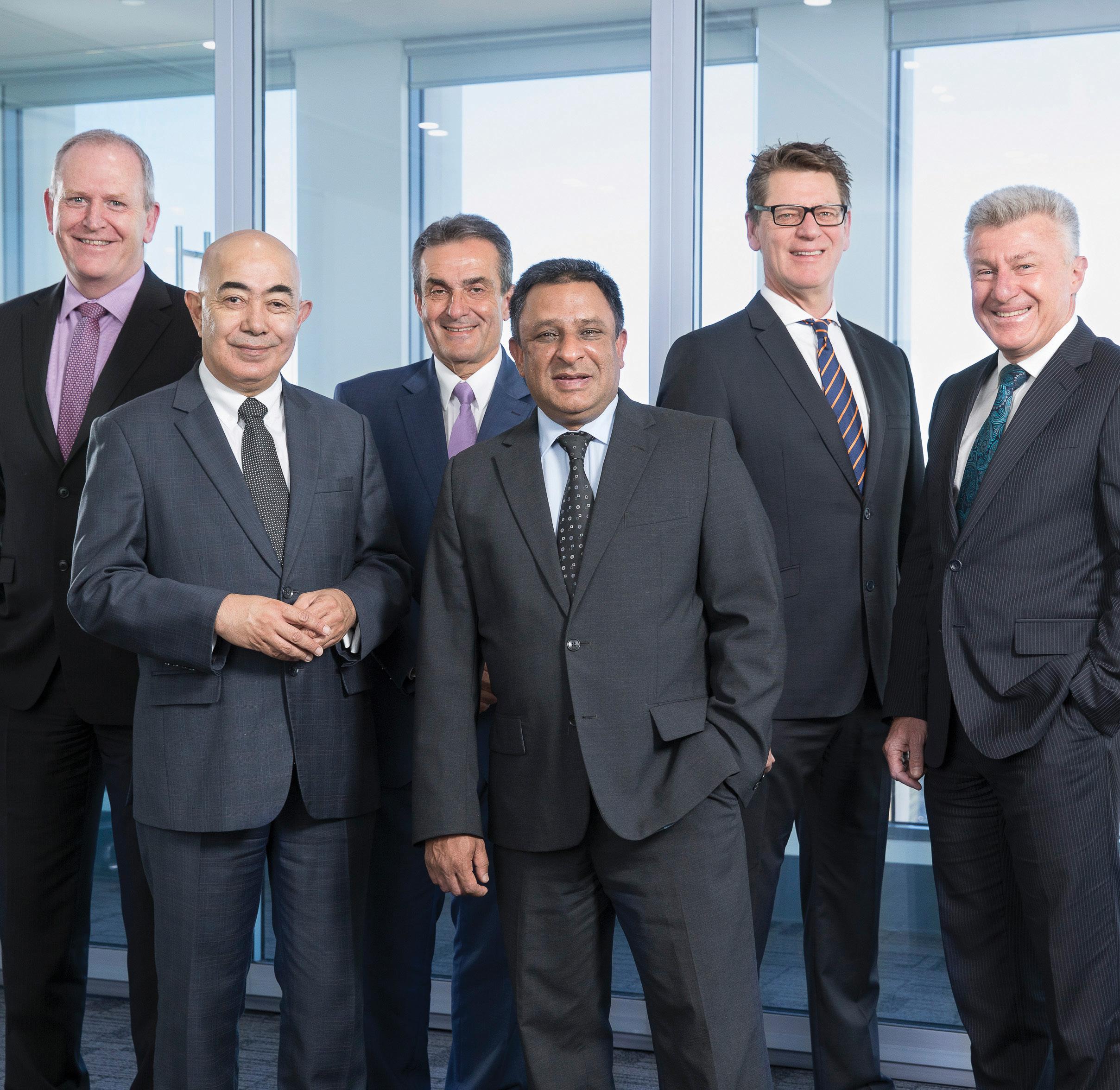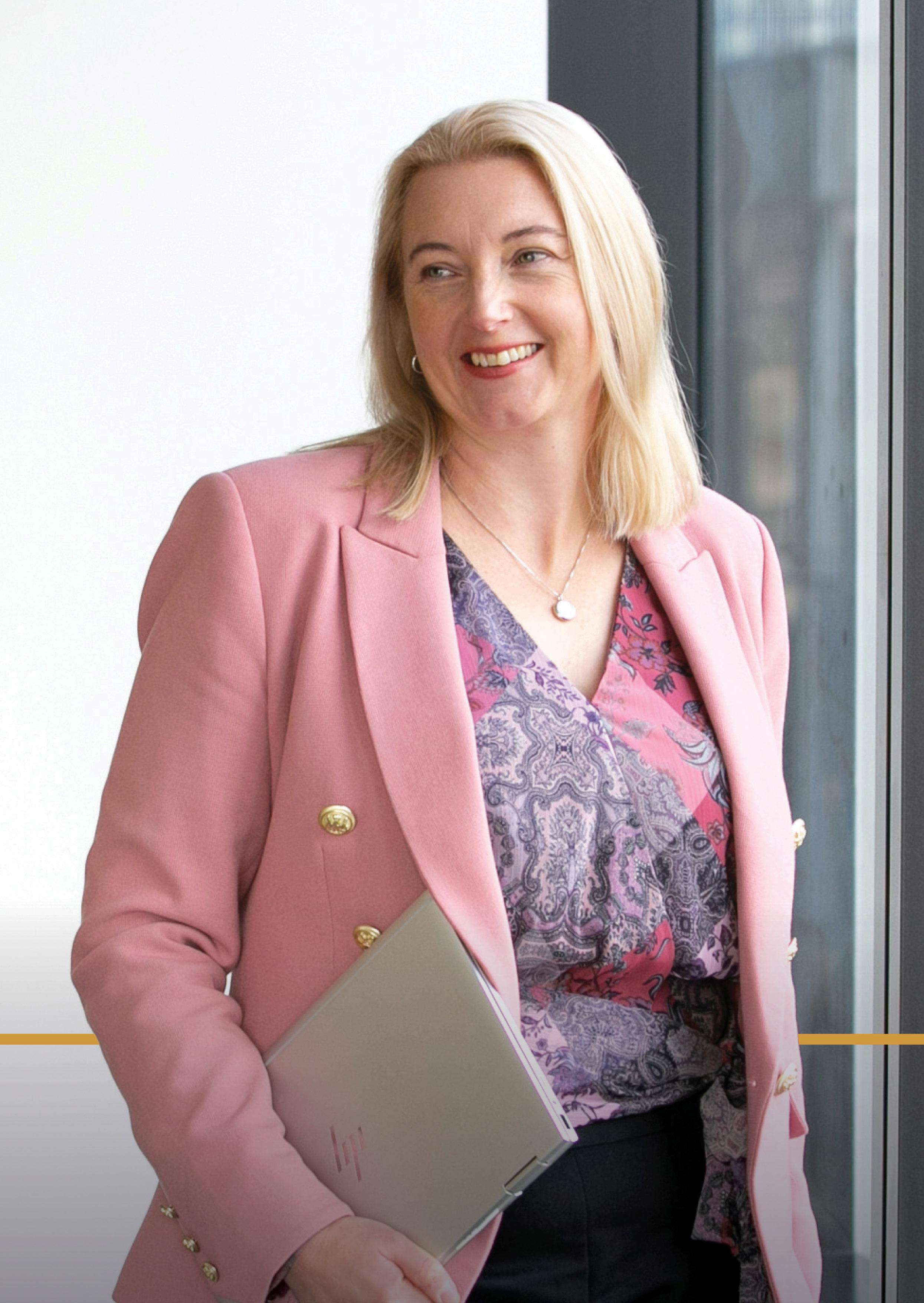Transparency Report
Year ended 30 June 2022


2 | William Buck Transparency Report 2022
“We are committed to maintaining a high level of understanding of the changing and complex regulatory and compliance requirements and to respond with honesty, urgency and integrity.”
Jamie McKeough Chair
Part B
3 | William Buck Transparency Report 2022 William Buck Transparency Report 2022 | 3 Messages 05 Message from the William Buck Chair 07 Message from the Audit Focus Group Chair Part A William Buck Group 10 Legal structure and ownership 11 Praxity International Alliance 13 Governance structure 16 Internal quality control 23 Effectiveness of William Buck’s Internal Quality Control System 24 Independence policies and procedures 25 People, learning and culture
William Buck Audit (VIC) Pty Ltd William Buck Audit (WA) Pty Ltd 29 Introduction 30 Director remuneration model 31 Financial information for William Buck Audit (VIC) Pty Ltd 32 Financial information for William Buck Audit (WA) Pty Ltd 33 Audited bodies of William Buck Audit (VIC) Pty Ltd 34 Audited bodies of William Buck Audit (WA) Pty Ltd 35 External quality assurance reviews 36 Contact Contents
 Jamie McKeough Chair
Jamie McKeough Chair
4 | William Buck Transparency Report 2022
William Buck Group
Message from the William Buck Chair

Challenging economic times both domestically and globally have only served to highlight the strength of the William Buck Group in 2022. Achieving growth organically and through strategic mergers has allowed us to respond to heightened demand for our depth of knowledge and breadth of services.
As the middle market remains resilient and continues to drive economic growth, the underlying strength and continuity of our relationships is what enables us to maintain and grow our strong client base in this segment, which we’ve remained true to for over 125 years.
We recognise that our continued success depends on our people. We are committed to strengthening the engagement of our people through nurturing a collaborative culture and striving to embody our values in all that we do. Our efforts were realised this year when William Buck was awarded a Voice Project Best Workplace award for outstanding performance in work practices and employee engagement.
Building a sustainable workforce is our priority and we do this not only by focusing on engagement but by providing a continuous learning environment which supports and develops our people to realise their full potential.
To underpin our learning and development framework, and investment in our talent, we have created the new role of Group Chief Learning Officer to which we’ve promoted from within. In addition, we have appointed a new Group Chief Risk Officer and Group Chief Operating Officer. Progressing our commitment to learning, quality, systems and risk will strengthen our ability to grow and provide the best quality advice and support for our clients.
Our Audit and Assurance services are a core offering and our auditors play a vital role in instilling confidence in the capital markets. Because of this, we recognise the
importance of our public interest responsibilities. In these challenging times, the role of the auditor is more critical and complex than ever. We are committed to maintaining a comprehensive understanding of the changing and complex regulatory and compliance requirements and to respond with honesty, urgency and integrity.
In this Transparency Report for the year ended 30 June 2022, we set out to demonstrate the quality control systems, methodology, people and governance structures we have implemented to assist our audit practitioners to deliver high quality client services. We are proud of the commitments we have made to continuous improvements in audit quality and in the growth of our audit teams across all William Buck offices in Australia and New Zealand.
We welcome the opportunity to engage with our stakeholders on how we deliver high-quality audit services to our clients through the publication of our Transparency Report.
Jamie McKeough Chair William Buck Group
William Buck Transparency Report 2022 | 5

6 | William Buck Transparency Report 2022
“Facilitating a strategic and collaborative approach to audit quality and continuous improvements is my key goal as Chair of the Audit Focus Group.”
Grant Martinella Chair Audit
Focus Group
Message from the Audit Focus Group Chair

Despite economic volatility, dampened business investment and socioeconomic challenges, William Buck has continued to grow and evolve our audit and assurance practices across Australia and New Zealand in 2022.
Testament to this have been our efforts to actively generate new ideas to be more effective in our ways of working, promote new leaders from within and advance our audit methodology and systems. As part of our continued growth and evolution, I was honoured to accept the role of Chair of the Audit Focus Group which was successfully led by Leo Tutt AM for over a decade. I sincerely thank Leo for his strong leadership and dedication. Leo supported William Buck in building a technically robust audit framework that enables our practitioners to deliver high quality assurance services to our clients. I am also grateful for Leo’s role in advancing the audit discipline across William Buck.
A significant achievement over the last twelve months has been the increased activity of our Audit Methodology Committee (AMC). The AMC consists of audit directors from across the group that collaborate on methodology matters. The purpose of the AMC is to further the quality and effectiveness of our audit procedures, systems and overall methodology by improving processes, and providing our auditors with technical and practical learnings to continuously improve our client services.
With borders open again, secondments of auditors from our Praxity international alliance of firms across North America, South America, Europe, Africa and Asia have enabled us to meet increased demands. Likewise, our Praxity membership has enabled our senior auditors to gain invaluable personal and professional development globally and support our fellow Praxity firms during their peak seasons.
Our current focus is on the implementation of Auditing Standard ASQM 1 Quality Management for Firms that Perform Audits or Reviews of Financial Reports and Other Financial Information, or Other Assurance or Related Services Engagements. Having a seamless application of this standard across all that we do in our audit practices at William Buck is our highest priority.
We look forward to continuing to serve our clients with distinction, delivering high quality audit and assurance services, and we remain committed to continuously improving the quality of our services.
Grant Martinella Chair Audit Focus Group
William Buck Transparency Report 2022 | 7
Part A William Buck Group


William Buck Transparency Report 2022 | 9
Legal structure and ownership
Established in 1895, William Buck has been helping people and their businesses for over 125 years.
The William Buck Group has a combined turnover of over $140 million and has over 110 directors and a 950-strong team across Australia and New Zealand.

We have offices in Sydney, Parramatta, Melbourne, Brisbane, Gold Coast, Perth, Adelaide, Auckland and Tauranga.
Although independently owned, our offices work together as one firm. This ‘one firm’ philosophy allows us to seamlessly offer the same high quality services and solutions across all our locations.
Legal structure
William Buck consists of six member firms. Each member firm is owned and operated at the local level and is licensed to be a member of the Group through William Buck Limited (WBL).
WBL is the custodian of William Buck’s intellectual property and engages specific personnel to manage the various elements of William Buck including quality assurance, risk, technical support, learning and development and marketing. WBL is a company limited by guarantee and its members are the Group member firms.
A member firm of WBL cannot act as an agent of WBL or any other member firm and is only liable for its own acts or omissions and not those of WBL or any other member firm. WBL has no right or ability to control any member firm’s exercise of professional judgement.
Statutory audits are conducted at the member firm level either through a partnership or authorised audit company. Each member firm engages with clients using consistent methodology, quality assurance policies and procedures and the same strict standards for ethics and independence.
10 | William Buck Transparency Report 2022
Praxity International Alliance
William Buck is a member of The Praxity Alliance. Established in 2007, Praxity has rapidly grown to become the world’s largest alliance of independent and unaffiliated audit and consultancy companies. Today, the alliance has a combined turnover of USD 7.95 billion and has more than 4,240 partners and 60,530 professional staff in over 780 offices across 120 countries.
Praxity represents some of the strongest and most skilled minds in our profession. Participant firms are selected for their size, strength and leadership positioning with strategic geographic relevance.
Nikolas Hatzistergos, Managing Director of William Buck (NSW), is a member of the Praxity Management Board, Governing Council and Membership Committee.
Praxity has a simple, cohesive, three-tier reporting and management structure, ensuring full transparency and proportional regional representation. It works effectively and efficiently.
Praxity’s Membership Committee scrutinises membership applications and then makes recommendations to the Board regarding applications and subsequent classifications. Membership Committee appointments are made by the Chair, with Management Board approval.
Praxity has won Accounting Association of the Year in 2021, 2019, 2017, 2016 and 2014; Thought Leadership Initiative of the Year in 2020; Campaign of the Year in 2018 and was Rising Star Association of the Year in 2013 – the first year the awards were given.
Three-tier reporting and management structure
1.
Annually, Praxity holds at least one General Meeting (AGM), where all participant firms vote on and approve standard matters including budgets, appointments of the Governing Council, the major policies and high-level strategic direction.
2. The Praxity Governing Council refines and focuses the Alliance’s strategic direction. Elected council seats are voted for by firms within the five regions. Governing Council members can serve two consecutive three-year terms.
3. The decision on whether to admit new participants, plus many other duties, rests with the nine Praxity Management Board members, who direct and manage the alliance’s activities. The Management Board is elected by and from the Governing Council.
William Buck Transparency Report 2022 | 11
Praxity’s mission is to be the most advanced alliance that independently delivers unmatched client service and quality solutions globally.

12 | William Buck Transparency Report 2022
Governance structure
William Buck has two key levels of governance that work in parallel with one another: brand governance and business governance.
Governing the brand
The WBL Board takes primary responsibility for universal management of William Buck brand matters. The Board consists of each member firm’s Managing Director. As at 30 June 2022, the WBL Board Members are:
Nikolas Hatzistergos, New South Wales
Clyde Young, New Zealand
Junaide Latif, Queensland
Jamie McKeough (Chair), South Australia
Lindsay Holloway, Victoria, and Mark Collins, Western Australia.
Position of Chair is determined annually through a vote by each WBL Board member and is ratified at the Annual General Meeting.
The key responsibilities of the WBL Board are as follows:
Risk management and quality assurance. The activities of this function are undertaken on behalf of the Board by Group Risk.
Professional indemnity insurance management.
Learning and development. The activities of this function are undertaken on behalf of the Board by Group Learning and Development.
Brand and marketing strategy. The activities of this function are undertaken on behalf of the Board by the Group Marketing Team.
Technical support. The activities of this function are undertaken on behalf of the Board by Group Technical.
Oversee the activities of the Group business unit focus groups. The goals of the Group focus groups are to leverage Group technical capability, build market presence and deliver high quality solutions to clients. At 30 June 2022, the following Group focus groups were operating:
Audit*, Grant Martinella Chair
Taxation, Greg Travers Chair
Business Advisory, Neil Brennan Chair
Wealth Advisory, Scott Girdlestone Chair
Corporate Advisory, Mark Calvetti Chair
General Manager, Amanda Anderson Chair
Restructuring and Insolvency, Garth O’ConnorPrice Chair
IT, Kent Sharp Chair
Marketing, Eireann O’Brien Chair
*The Audit Focus Group membership comprise the Audit leaders of each firm. The group meets at least quarterly and drives an agenda supporting the delivery of high-quality audits. An Audit Methodology Sub-Committee leads continuous improvement in the audit methodology and tools available to practitioners.
William Buck Transparency Report 2022 | 13
The goals of the focus groups are to leverage Group technical capability, build market presence and deliver high quality solutions to clients.

14 | William Buck Transparency Report 2022
Clyde Young Managing Director New Zealand
Mark Collins Managing Director Western Australia
Lindsay Holloway Managing Director Victoria
Junaide Latif Managing Director Queensland
Jamie McKeough Chair and Managing Director South Australia
Nikolas Hatzistergos Managing Director New South Wales
From left to right:
Governance structure (cont’d)
Governing the business
Each member firm’s Managing Director leads their firm’s business and marketing strategies in a manner that supports the WBL Board initiatives.
This includes:
Attraction and retention of quality personnel
Organic growth strategies
Acquisition strategies
Tailored client services
Industry specialisation, and Development of new service offerings.
Risk Management & Quality Assurance
Learning & Development
Each member firm’s Managing Director is supported by an executive Board. It’s the role of the Managing Director to successfully implement the Group strategy within their own firm, develop detailed budgets, manage personnel and ensure that the member firm is meeting all of its requirements to maintain its success and that of the brand.
Each member firm’s Managing Director reports formally to the WBL Board on a regular basis in a comprehensive and consistent format. Reporting includes: financial information, marketing and brand management activities, human resources, quality control issues, and potential professional indemnity issues.
The two levels of governance come together as follows:
William Buck Limited
Responsible for:
Business Unit Focus Groups
Brand Management & Marketing Strategy
Technical Support
WBL Board Members — Managing Directors of Member Firms
William Buck Member Firms
William Buck Transparency Report 2022 | 15
Business Unit Focus Groups Audit Taxation Business Advisory Corporate Advisory Wealth Advisory Restructuring & Insolvency NSW NZ QLD SA VIC WA
Internal quality control
Leading from the top
As auditors, we play an important role in protecting the public interest and supporting the effective functioning of the financial reporting system, Delivering quality audit services is an imperative to both the success of the Group’s relationship with its stakeholders and to William Buck’s brand and reputation. The WBL Board has been very clear in setting expectations with all member firms’ audit practices in relation to maintaining effective internal quality control systems to deliver consistent quality audit services.
The WBL Board, together with Group Risk, Group Technical and the Audit Focus Group, champion the investment in evolving the audit methodology, tools and other resources needed to support and continuously improve audit quality.
Conflicts of Interest & Independence Assessment
The audit process
Client acceptance and reacceptance
Client acceptance and reacceptance considerations are the first key step in delivering audit quality. Client acceptance procedures are conducted prior to formally accepting a client and then reacceptance is performed annually prior to commencing the current year’s engagement.
William Buck has rigorous policies, procedures and approval processes in place which are conducted prior to accepting clients to be associated with the William Buck brand. This includes a detailed assessment of the criteria outlined in the table below.
Group wide conflict checks performed
Any proposed non-assurance services assessed to ensure no impairment to audit independence and if necessary, safeguards are put in place
Determine whether financial interests and other relationships of the engagement team and where relevant the wider firm exist
Client Risk Assessment Company and director integrity
Company and industry characteristics
Public profile of the company and directors
Business structure, organisation and management levels
Engagement Risk Assessment Team member capability and available time
Adequacy of fee to ensure a quality audit can be conducted
Capability of specialists when proposed to be used
16 | William Buck Transparency Report 2022
Internal quality control (cont’d)
The audit methodology
1. Establishing the audit plan
Meeting with management
Understanding your business and industry
Analytical review of your financial data
Risk and control assessment
2. Executing the plan
Interim and controls testing
Perform substantive testing
Resolve audit differences
3. Audit reporting
Issue audit opinion
Reporting to management and those charged with governance
Establishing the audit plan
This is an iterative process that continues throughout the audit. To commence the audit plan, senior William Buck audit team members will meet with management to establish and confirm where the key focus points will be during the execution phase. This process also includes:
Compiling an audit team with the industry knowledge and experience to meet the needs of the client’s business and risks identified to date, through the client acceptance or reacceptance process and industry knowledge.
Identifying and assessing the risks of material misstatement through understanding the client, including through analytical review of financial data.
Planning the appropriate testing strategy for the key risks identified at the assertion level.
Assessing risks on material balances and establishing the audit work to be carried out at the assertion level.
Establishing a mutually agreeable timetable that meets the client’s reporting deadline requirements but also allows requisite time for a quality engagement to be completed.
Determining and communicating the information needs of the audit team to maximise the effectiveness of audit execution.
The establishment of the audit plan is critical at this phase as it provides the foundations for a quality audit engagement.
Executing the plan
There are a number of milestones throughout the execution of the audit plan, noting also that the audit plan is subject to real time updates as the audit progresses.
Interim and controls testing
Conducted in line with the audit plan through the Caseware documentation platform.
Substantive testing
Conducted in line with the audit plan having assessed the results of interim and controls testing through the Caseware documentation platform.
William Buck Transparency Report 2022 | 17
Communication with management and those charged with governance

18 | William Buck Transparency Report 2022
Internal quality control (cont’d)
Audit reporting
Issue audit opinion
A financial statement review is conducted to determine whether the financial statements are consistent with the information obtained during the audit and whether they are appropriately presented. Based on the audit process and the review of the financial statements, William Buck will determine the appropriate audit opinion to be issued, and for listed clients will determine the appropriate key audit matters to be communicated.
Reporting to management and those charged with governance
Significant matters that need to be raised with management and/or those charged with governance are communicated in writing.
Given open communication is a key foundation to the William Buck audit methodology, it takes place continuously, such that management and those charged with governance are kept up to date with progress and there are no surprises.
Audit quality fundamentals
Audit quality fundamentals penetrate all aspects of each audit engagement conducted by William Buck. The key audit quality fundamentals are as follows:
Professional skepticism
The mindset of professional skepticism is a key behavioural element required by all audit professionals. William Buck emphasises and drives this behaviour as business critical, through its policies, procedures, training and evaluation of audit personnel.
Supervision, review and consultation
The firm’s policies and procedures in relation to audit engagements are outlined overleaf.
William Buck Transparency Report 2022 | 19
Our consultation culture
Consultation is key to delivering high quality audits. In addition to formal consultation requirements, we have a strong consultative culture where directors regularly consult with other practitioners or the technical team outside of the policy requirements.
Engagement Quality Control Reviews (EQCR)
EQCR PIE engagements as defined in the Glossary of APES 110Code of Ethics for Professional Accountants (including Independence Standards)
Director / Principal
Consider whether:
The work has been completed appropriately
line with the audit plan and meets the requirements of the auditing standards and where relevant, professional pronouncements and legislation.
whether:
The audit work conducted appropriately addresses the audit risks identified.
The appropriate technical consultations were made and the conclusions drawn are appropriately documented.
The evidence is sufficient to support the audit opinion.
Consider whether:
The audit team made the right conclusions in relation to matters of significant judgment and the work papers appropriately record the conclusions drawn.
The financial statements and audit report are appropriate.
The appropriate technical consultations were made and the conclusions drawn are appropriately documented.
Specialist Reviews
Financial statements preissuance
Audit opinions
Disclosing entities are reviewed annually if certain criteria are met, otherwise every alternate year
All engagements where an Emphasis of Matter, Material Uncertainty or modification is being considered.
All Long Form Audit Reports.
Consultations Mandatory consultations are required in specific circumstances following the Consultation policy. In addition, teams also consult on a professional judgement basis.
Group Technical To assess the financial statements for compliance with the Financial Reporting Framework
Experienced director panel, Group Technical
Group Technical, Corporate Advisory, Tax, other experts
To consider and review the appropriateness of the proposed audit report and the wording of the modification, material uncertainty or emphasis of matter
To support engagement teams adopt the correct interpretation for difficult or contentious issues
20 | William Buck Transparency Report 2022 Review conducted When review is required The review is conducted by Purpose of the review Audit File
least one level of detailed review All engagements A member of the engagement team that has more experience than the person who completed the work
At
Overriding review All engagements Director Consider
in

William Buck Transparency Report 2022 | 21
The WBL Board, the Audit Focus Group and Group Risk take the peer review process seriously and that tone from the top is understood across the function.
Internal quality control (cont’d)
Audit director rotation
Regular rotation of the engagement director and EQCR roles is also seen as a fundamental pillar to audit quality. Fresh eyes bring a fresh perspective, and this is a key ingredient to overall audit quality.
The William Buck director and EQCR rotation policy is in line with the requirements of APES 110 – Code of Ethics for Professional Accountants (including Independence Standards) and the Corporations Act 2001. In line with APES 110, audit directors and EQCRs on listed entities will rotate after five years of service and then have at least a three-year cooling off period, where no involvement with the client in any capacity is permitted. Other key audit directors will rotate after seven years’ service and then have a two-year cooling off period. A rotation register is maintained to ensure that rotation is appropriately managed at the member firm level.
Human resources
William Buck believes that to ensure quality audits are conducted, quality people must be employed and developed. To this end, milestones are built into the competency framework for all grades and reflected in the director and staff assessment and remuneration processes.
Internal quality reviews
Each audit Director will be the subject of the William Buck internal peer review process at least once every three years.
The process is a rigorous one and is coordinated and managed by Group Risk, who:
Select engagements
Select reviewers
Maintain the review program which focuses on the requirements of APES 110 – Code of Ethics for Professional Accountants (including Independence Standards), Australian Auditing Standards and the Corporations Act 2001
Moderate results
Report the results to member firms, WBL Board and the Audit Focus Group
Work with member firms through the Audit Focus Group to determine the root cause of quality issues identified and to take appropriate actions to continuously improve quality
Communcate the thematic results of the peer reviews to audit staff across the Group, and Follows up engagement teams on a timely basis to determine whether actions identified have been undertaken on subsequent audits.
Continuous improvement
We have a focus on continuous improvement of the audit methodology and processes to enhance audit quality.
Compliance with the Quality Management Standards
Activities are well underway to enable compliance with the new Standards on Quality Management (ASQM 1 and ASQM2) by 15 December 2022.
22 | William Buck Transparency Report 2022
Effectiveness of William Buck’s Internal Quality Control System
The WBL Board believes that the Internal Quality Control Systems described in pages 16-22 of this report provide a reasonable basis for believing that assurance engagements conducted by the member firms comply with Australian Auditing and Assurance Standards, relevant ethical requirements and applicable regulatory and legal requirements.
Given William Buck’s commitment to continuous quality improvement, the Internal Quality Control System allows for the identification of areas that can be focused on for implementation improvement.
The WBL Board confirms that, while at the same time recognising the inherent limitations in providing an absolute guarantee, it is satisfied with the operation and effectiveness of its Internal Quality Control System.
 Jamie McKeough Chair William Buck Group
Jamie McKeough Chair William Buck Group

William Buck Transparency Report 2022 | 23
Independence policies and procedures
Maintaining independence and professional integrity is critical to William Buck’s reputation and brand.
William Buck has strong prescriptive policies and procedures concerning independence in all assurance and non-assurance business units, in all member firms. They are designed to identify at the earliest stage, potential conflicts of interest such that conflicts can be dealt with in line with the requirements of APES 110 – Code of Ethics for Professional Accountants (including Independence Standards) and the Corporations Act 2001.
Our strong culture supporting the independence imperatives is supported by mechanisms to appropriately deal with directors and staff who do not comply with the requirements.
An environment of open consultation has been established over many years such that directors and staff from member firms consult on:
Independence issues (potential, actual or perceived) that emanate from servicing clients
Personal direct or indirect financial interests
The appropriateness of non-audit service assignments on audit engagements, and The appropriateness of business relationships.
All directors and staff are required to complete an annual independence declaration to confirm their compliance with the William Buck policies and the applicable professional and legal requirements. New and returning directors and staff are required to confirm their independence as part of the onboarding process.
Relevant to audit only include:
— Independence sign-off at the planning and completion phases of the audit for all audit engagements
— s307C Independence declarations for Corporations Act 2001 engagements
— Audit director rotation policies
24 | William Buck Transparency Report 2022
Independence framework
bans
client acceptance process in all business units
Independence Policy Annual declaration of compliance with William Buck’s policies and procedures in relation to Ethics and Independence. Completed by all directors, staff and contractors
to acceptance of non-audit services where conflict identified Policies in relation to directors or staff leaving a William Buck firm
Group-wide conflict checking and trading
Formal
Restricted entities listing – Group wide
Requirement to consult prior
People, learning and culture
Our ethos is to make a positive impact on the lives of our people, clients and communities.
Our people
For our people, we aim to do this by fostering a strong, nurturing culture that provides unparalleled support and celebrates diversity and authenticity.
Our culture
This culture is underpinned by our CARE values of Collaborative, Aspiring, Relationship-driven and Enterprising. These values guide the way we interact with each other and clients, and our approach to all that we do. A testament to our culture, we were this year awarded the Voice Project’s Best Workplace Award for outstanding performance in work practices and employee engagement. We engaged the Voice Project to facilitate our firmwide Employee Engagement Survey and the award was given as acknowledgement of our positive results.
Learning and development
Our strong commitment to learning and development is another way we support our people while enhancing our sustainability and enabling succession. We also believe that learning is key to a fulfilled professional and personal life.
William Buck invests significantly in the continued professional development of directors and staff across the Group. We believe in providing our people with challenging and rewarding careers which results in outstanding quality service to clients.
The Audit Focus Group takes ownership of this comprehensive process with substantial input from Group Technical and Group Risk.
Our employees have access to GO1, a world leading digital learning library offering professional development, wellbeing and compliance courses. Our employees can access a range of topics within the Learning Management System that links directly to the GO1 content. Topics include but are not limited to: time management, leadership, team building, general personal development and health and wellbeing.
Learning pathways have been curated for graduate, intermediate, senior and manager roles. The learning pathways are mapped to the William Buck capability framework and designed specifically for our employees to develop in their role and build capability for future roles.
25 | William Buck Transparency Report 2022 William Buck Transparency Report 2022 | 25
People, learning and culture (cont’d)
Ensuring that leadership from the top surrounding the importance of risk management and quality assurance is not only communicated but embedded in every member firm.
Our professional development program centres on both technical and non-technical skills and is aligned with the Group’s capability framework. It is focused on:
Audit and accounting technical training
In addition to the Group wide induction training which addresses ethical, compliant and independence obligations, audit personnel embark on a career-long comprehensive training regime.
The curriculum under this program includes:
William Buck’s audit methodology under a staged approach over a number of years, dependent on experience
Professional Ethics and Independence
William Buck’s documentation platform
Accounting standards update, at least one day per year
Interviewing skills
Coaching skills
Report writing skills
Client service skills
Leadership skills
Keeping directors and staff up to date with developments in regulatory, accounting and auditing laws and standards.
Providing directors and staff with the right knowledge and skills at the appropriate time in their careers to allow them to deliver quality outcomes for clients and have an enriching career.
The William Buck audit learning journey consists of a Graduate Program focusing on soft skills and audit technical training, an Intermediates Blended Learning Program focusing on technical content delivered online and virtually as well as a virtual or in-person Seniors Audit Program building upon capability as careers progress.
Audit personnel receive ad-hoc training based on specific needs or as a result of legal or regulatory change.
William Buck requires that professional personnel obtain a minimum of 40 hours of comprehensive learning and development per year and at least 120 hours over a three-year period.
William Buck also provides and encourages its directors and staff to attend professional development and training through external providers. We believe that this ensures broader perspectives are obtained and enhances the quality of William Buck people.
26 | William Buck Transparency Report 2022

William Buck Transparency Report 2022 | 27
Part B William Buck Audit (VIC) Pty Ltd William Buck Audit (WA) Pty Ltd

28 | William Buck Transparency Report 2022
The contents of Part B of the William Buck report are in accordance with the firm specific elements of Part 2 of Schedule 7A of the Corporations Amendment Regulation 2012 (No.5).
At 30 June 2022, William Buck Audit (VIC) Pty Ltd and William Buck Audit (WA) Pty Ltd are the only William Buck member firms that need to lodge a Transparency Report under the criteria of s332A(1) of the Corporations Act 2001. Information on the audit specific elements for other member firms will be provided when the s332A(1) criteria are met.
William Buck Audit (VIC) Pty Ltd and William Buck Audit (WA) Pty Ltd are Authorised Audit Companies as defined under Division 1 of Part 9.2A of the Corporations Act 2001.
Contents of Part B of the 2022 Transparency Report are to be read in conjunction with Part A. Together the full report addresses all elements of Part 2 of Schedule 7A of the Corporations Regulations 2001.

William Buck Transparency Report 2022 | 29
Introduction
Director remuneration model
The director remuneration model for William Buck Audit (VIC) Pty Ltd and William Buck Audit (WA) Pty Ltd rewards directors on the basis of quality performance, responsibility, experience and respective contributions of directors.


The performance and contribution of each director is assessed on an ongoing and annual basis and they receive a level of remuneration in accordance with their performance and contribution.
The key components of the criteria which directors are assessed upon are:
Leadership
Technical competency
Ethical conduct
Development and care of professional and administrative employees
Client service
Practice management
Business development*
Commitment to continuing professional education
Commitment to quality assurance
Building brand and firm value, and Community commitment.
Nicholas Benbow Head of Audit
William Buck, Melbourne
30 | William Buck Transparency Report 2022
Conley Manifis Head of Audit William Buck, Perth
* William Buck Audit (VIC) Pty Ltd and William Buck Audit (WA) Pty Ltd Directors are not incentivised or remunerated in any form for cross selling of non-assurance services to audit clients.
Financial information for William Buck Audit (VIC) Pty Ltd
*The fees for non-audit services are provided by related entities of William Buck Audit (VIC) Pty Ltd.
William Buck Transparency Report 2022 | 31
2022 Fees for Listed Entity Audits (exclusively audit services) $2,416,716 Fees for non-audit services for Listed Entity Audits* $228,936 Total fees to Listed Companies $2,645,652 Total fees for all audits $7,468,096
Financial information for William Buck Audit (WA) Pty Ltd
*The fees for non-audit services are provided by related entities of William Buck Audit (WA) Pty Ltd.
32 | William Buck Transparency Report 2022
2022 Fees for Listed Entity Audits (exclusively
$278,104 Fees for non-audit services for Listed Entity Audits* $23,030 Total fees to Listed Companies $301,134 Total fees for all audits $2,466,401
audit services)
Audited bodies of William Buck Audit (VIC) Pty Ltd
The following William Buck Audit (VIC) Pty Ltd audits meet the criteria of s332A(1) of the Corporations Act 2001:
A-Cap Energy Limited
A2A GN Ltd
Alvo Minerals Limited
Auric Mining Limited
Cann Group Limited
ChemX Materials Limited
Cohiba Minerals Limited
ColorTV Limited
Connexion Telematics Ltd
Copper Strike Ltd
De.mem Limited
E2 MetalsLimited
Exopharm Limited
Flynn Gold Limited
FOS Capital Ltd
IPB Petroleum Limited
Iris Metals Limited
Jayex Technology Limited
Keybridge Capital Limited
KNeoMedia Limited
Knosys Limited
Lakes Blue Energy NL
Lumos Diagnostics Holdings Limited
Montem Resources Limited
MRG Metals Ltd
Nagambie Resources Limited
Novatti Group Limited
Noxopharm Limited
Nyrada Inc
Opyl Limited
Perpetual Resources Limited
Prescient Therapeutics Limited
QuickFee Limited
Ronin Resources Ltd
Secos Group Ltd
SenterpriSYS Limited
Sequoia Financial Group Ltd
Southern Cross Gold Ltd
Stellar Resources Limited
The GO2 People Ltd
The Sustainable Nutrition Group Ltd
Vertex Minerals Limited
Victor Group Limited
VIP Gloves Ltd
Wellnex Life Limited
West Wits Mining Limited
Wingara AG Ltd
William Buck Transparency
2022
33
Report
|
Audited bodies of William Buck Audit (WA) Pty Ltd
The following William Buck Audit (WA) Pty Ltd audits
meet
the criteria of s332A(1) of the Corporations Act 2001:
Beacon Minerals Limited
Constellation Resources Limited
Eagle Mountain Mining Limited
GCX Metals Limited
Great Northern Minerals Limited
IXUP Limited
M3 Mining Limited
Peregrine Gold Ltd
Province Resources Ltd
Triton Minerals Ltd
34 | William Buck Transparency Report 2022
External quality assurance reviews
William Buck Audit (VIC) Pty Ltd and William Buck Audit (WA) Pty Ltd were subject to the following regulator and professional body reviews during the period:

Entities authorised to review Reviews conducted during the year
ASIC One engagement file review completed in August 2021 and one in-progress at 30 June 2022
CAANZ/ CPA One review in progress at 30 June 2022
Office of the Auditor General for Western Australia (OAG) No review conducted
* The reader should not make any assumptions about the scope of, or findings from, any review.
William Buck Transparency Report 2022 | 35
Contact
New South Wales
Sydney Level 29
66 Goulburn Street
Sydney NSW 2000
Parramatta
Level 7
3 Horwood Place
Parramatta NSW 2150
PO Box 19
Parramatta NSW 2124
T (61 2) 8263 4000
F (61 2) 8263 4111
nsw.info@williambuck.com
Victoria
Melbourne Level 20
181 William Street
Melbourne VIC 3000
T (61 3) 9824 8555
F (61 3) 9824 8580
vic.info@williambuck.com
Queensland
Brisbane Level 22
307 Queen Street
Brisbane QLD 4000
Gold Coast Level 3, Corporate Centre One
2 Corporate Court

Bundall QLD 4217
GPO Box 563
Brisbane QLD 4001
T (61 7) 3229 5100
F (61 7) 3221 6027
qld.info@williambuck.com
Western Australia
Perth Level 3
15 Labouchere Road
South Perth WA 6151
PO Box 748
South Perth WA 6951
T (61 8) 6436 2888
F (61 8) 6436 2889
wa.info@williambuck.com
South Australia
Adelaide Level 6
211 Victoria Square
Adelaide SA 5000
GPO Box 11050
Adelaide SA 5001
T (61 8) 8409 4333
F (61 8) 8409 4499
sa.info@williambuck.com
New Zealand
Auckland Level 4
21 Queen Street
Auckland 1010 New Zealand
Tauranga
The Kollective
145 Seventeenth Ave
3112 New Zealand
T (64 9) 366 5000
F (64 9) 366 5001
info@williambuck.co.nz
36 | William Buck Transparency Report 2022
This report contains general information about the William Buck Group and its member firms as is required by the Corporations Act 2001 and Corporations Amendment Regulation 2012 (No.5) and as such should not be read as professional services or advice. Liability limited by a scheme approved under Professional Standards Legislation.


williambuck.com


 Jamie McKeough Chair
Jamie McKeough Chair











 Jamie McKeough Chair William Buck Group
Jamie McKeough Chair William Buck Group









